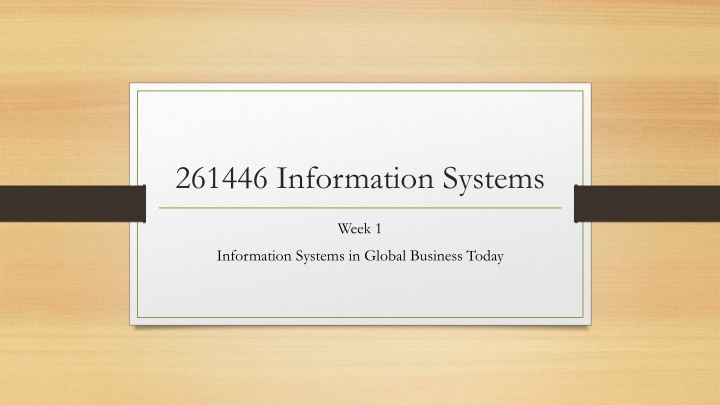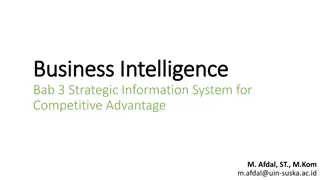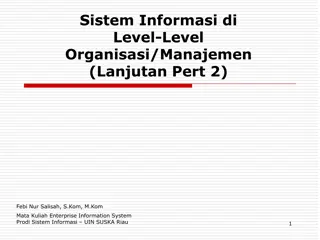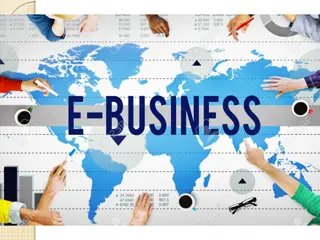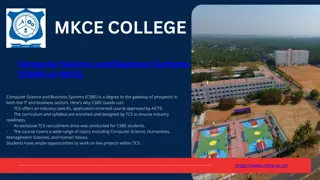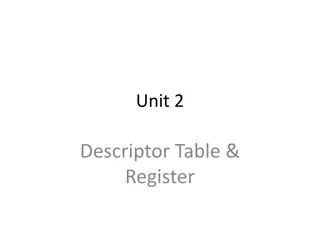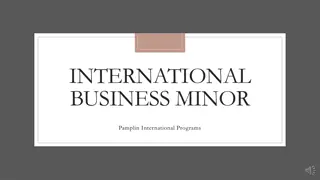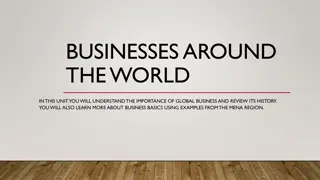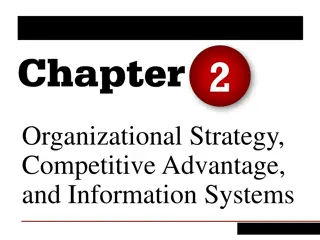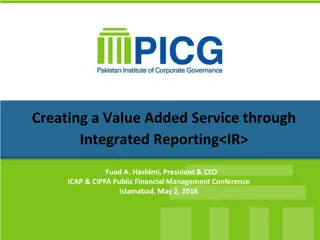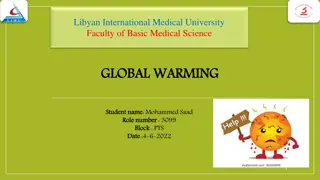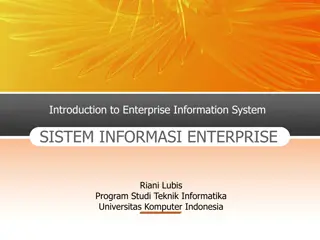Information Systems in Global Business Today
Information systems play a crucial role in modern businesses, driving efficiency, customer engagement, and adaptation to changing markets. This content explores various topics such as the role of IS in business, contemporary approaches, case studies, statistics on IT spending, and the impact of new technologies like cloud computing and big data.
Download Presentation

Please find below an Image/Link to download the presentation.
The content on the website is provided AS IS for your information and personal use only. It may not be sold, licensed, or shared on other websites without obtaining consent from the author.If you encounter any issues during the download, it is possible that the publisher has removed the file from their server.
You are allowed to download the files provided on this website for personal or commercial use, subject to the condition that they are used lawfully. All files are the property of their respective owners.
The content on the website is provided AS IS for your information and personal use only. It may not be sold, licensed, or shared on other websites without obtaining consent from the author.
E N D
Presentation Transcript
261446 Information Systems Week 1 Information Systems in Global Business Today
Week 1 Topics The Role of IS in Business Today Perspectives on IS Contemporary Approaches to IS
Case Studies #1) PCL Construction #2) Deutsche Bank
IS stats In 2020, IT spending worldwide is expected to reach about 3.61 trillion U.S. dollars, a decline of 5.4 percent due to the negative economic impact caused by the global coronavirus (COVID-19) pandemic. (Statista) 2019 $4 Trillion spent on IT 2014 US business spends $817 billion on IS hardware, software & telecoms In 1999 private business invested 14% of their invested capital in IT, in 2013 it was 33%.
US stats 247 million American have mobile phones (67%) 167 million access the Internet on smart phones. 46% use tablets 172 million Americans use social networks (150 million on facebook)
More stats June 2014, more than 114 million dotcom businesses 196 million Americans shop online, 90 million researching products for purchasing online every day. Businesses are using IS to sense and respond to rapidly changing customer demand, reducing their inventories, and becoming more efficient. Supply Chains are fast-paced, relying on Just In Time inventory
Changing Markets Newspaper readership declines, while online media absorption increases using new forms; Videos, Blogs. Social Networking increases authorship, with new forms of customer feedback. Businesses are turning to social networking tools to connect employees, customers, suppliers and managers.
Whats New in IS? New Technologies New Management Usage Changing Organisations
New Technology? Cloud Computing Big Data Mobile Digital Platform
Cloud Computing Flexible collection of computers on the Internet performing tasks that were traditionally performed locally on corporate computers. More business applications delivered online as Internet Services (SaaS)
Big Data Businesses are searching for insights from huge volumes of data, such as Web traffic, email messages, social media content. Technologies being used to sense and capture data, and analyse it.
Mobile Digital Platform Smart Phones with hundreds of thousands of applications supporting collaboration, location based services as well as communication. Tablet computers challenging the traditional laptops as the platform for consumer / corporate computing.
New Management Usage Online Collaboration Business Intelligence Virtual Meetings
Online Collaboration Social Networks used to improve coordination, collaboration & knowledge sharing Google Apps, etc. used to support project management, online meetings & communities
Business Intelligence Data Analytics Interactive Dashboards Real-time performance information to enhance manager decision making
Virtual Meetings Video conferencing reduces travel time & cost, improving collaboration & decision making
Changing Organisations? Social Business Teleworking Co-creation of Business Value
Social Business Social Networking platforms used to deepen interactions between employees, customers & suppliers Employees use blogs, wikis, email & messaging to interact within online communities
Teleworking Internet connectivity, wireless laptops, smartphones & tablets, make it possible to work away from the traditional office 55% of US businesses have some kind of remote work program
Co-creation of Business Value Source of business value shifts from products to solutions & experiences. Shift to networks of suppliers & customers Supply chains become more global & collaborative
Recurring Themes Collaboration & Community (Big) Data Analysis -> Decision Support
The Emerging Digital Firm A firm where nearly all significant business relationships with customers, suppliers and employees are digitally enabled & mediated. Core business processes (hiring, firing, developing new products, fulfilling orders, creating marketing plan, etc.) accomplished through digital networks spanning entire organisations or connecting organisations Key corporate assets (IP, core competencies, financial / human assets) managed through digital means.
Digital Firms Information to support key business decisions, available any time, anywhere. Sense & Respond to environments, rather than produce and sell. Flexible & Agile. Time Shifting & Space Shifting; No longer constrained to the 9-5 work day, or the physical location where business is conducted.
Strategic Information Systems IS is increasingly taking on a key role in deciding and driving a corporate strategy. There is a growing interdependence between IS & business capability; changes to strategy requires changes in hardware, software, databases & telecommunications. What an organization would like to do in 5 years is often constrained by what its systems will allow it to do.
Strategies Operational Excellence New Products, Services & Business Models Customer & Supplier Intimacy Improved Decision Making Competitive Advantage Survival
Operational Excellence Improving efficiency of operations, leading to higher profitability Walmart World largest retailer, with world class operations. Retail Link system digitally links suppliers to every Walmart store as soon as a customer purchases an item, the supplier knows to ship a replacement item. (SCM) $28 sales per square foot, compared with Target $23 & others <$12
New Products, Services, and Business Models New digital products & services, as well as the models for how companies produce, deliver & sell a product or service. Entertainment Industry Massively different from decades ago. Vinyl records, tapers & CDs -> Istore, Netflix, legal online distribution model.
Customer & Supplier Intimacy Shift from Transactional Marketing to Relational Marketing. The key is to get to know your customers High end hotels keep track of guests preferences; check in time, room temperature, frequently called phone numbers, TV shows, etc. The room then adjusts itself according to the customer s preferences.
Improved Decision Making Good information leads to better decisions Real time information, helps make better on the spot decisions. E.g. a telecommunications company which has precise, real time information on customer complaints, network performance etc. which can be used to allocate repair resources better.
Competitive Advantage Doing things better than your competitors Charging less for better products Responding to customers in real-time
Survival Firms have to invest in IS & IT to survive. Imagine a bank that doesn t offer ATM service? Some industries are required to maintain digital records (e.g. toxic substances), or public accounting
IT or IS? Information Technology all the hardware, software needed to support an organization Information Systems A set of interrelated components that collect, process, store and distribute information to support decision making and control in an organisation
Data or Information Data Raw facts Information Data that is meaningful and useful for humans A supermarket check out scans millions of pieces of data from barcodes. That data is analysed to provide useful information, such as sales totals, stock levels etc.
Data to Information? Input Collecting or capturing data Processing Converting data into some meaningful form Output Presenting that information to the people who need it Feedback Further output to allow people to support, evaluate or correct the system
IS More than Computers Understanding the Information System, requires understanding the Organisation, the Management & the Technology
Organisations People Structure Business Processes Politics Culture
Organisations - Structure An organization s structure highlights the divisions of labour, authority, responsibility. Senior Management Long-range strategic decisions Middle Management Implementing the programs and plans Operational Management Day to day monitoring
Business Functions Specialised tasks Sales & Marketing Manufacturing / Production Finance / Accounting Human Resources Each with formal rules to follow
Culture Assumptions & Values the way of doing things, accepted by most of the people. Perhaps a mantra, or core corporate value Customer Service Quality Everyone might not always agree with the corporate culture, which can lead to politics And IS is impacted by culture & politics
Management Make sense of business environment, make decisions, formulate action plans to solve problems Allocate human & financial resources Leadership Create new products, ideas, largely driven by new knowledge & information
IT Hardware Software Data Management Networking & Telecomms IT is a platform upon which IS can be built it is the enabler.
Perspectives on IS Technical Approach Computer Science - Physical technology, Mathematical models of computation, formal proofs of capabilities Behavioural Approach Sociology, Psychology, Economics Affects of technology on groups, individuals, society etc. Sociotechnical Approach Considering; 1) the technology, 2) the business, 3) the managers / employees, 4) the environment
Review Questions How are IS transforming business, and what is their relationship to globalization? Why are IS so essential for business management today? What is an IS? What are its components? What academic disciplines are related to studying IS?
